For decades, the long-standing argument between curly and straight hair has enthralled the cosmetic industry. While some people are drawn to the classic beauty and polish of sleek, straight locks, others find themselves enthralled by bouncy curls that seem lively and fun. Regarding pure beauty, then, is one truly more appealing than the other?
Culture, personal taste,
Scientific signals, and even facial shape all help to shape hair appeal. To assist you in creating a well-rounded perspective of the curly-versus-straight debate, this article investigates all those angles—scientific studies, beauty standards, racial implications, hair care reality, and psychological effects.
Table of contents
The attractiveness of bouncy curls
Views Of Curly Hair From Different Cultures
Racial Preference Against Textured Hair
The Science of Personal Choice in Hair Styles
Bounce and volume
Face Shape and Harmonies of Hair
The Factor of Attention
Maintenance Possibilities
Everyday Straight Hair Routines
Essentials for Self-Care for Curls
Changing Cultural Standards of Hair Beauty
Movement of Natural Hair
Social Media and Empowerment in Hair
Globally curious curl
Variations in ethnic texture
Curl Transformations and Difficulties
Texturizing and Perming Expounded
Overvaluation: Empowerment
Strengthening Curly Hair Confidence, Taking Use of the Learning Curve, Setting Up an Inspired Hair Space, Improving Beauty Standards, Finally
Regarding Curly Hair Appeal
The Beauty of Bouncy Curls.
Curls give you character. Curls, whether soft waves or tight spirals, usually convey color, fun, and uniqueness. This is a hairdo that quite literally makes people turn heads: volume, movement, face-framing abilities.
Many link curls to youthfulness and energy. A flawlessly undone curl seems both wild and passionate and is easy to execute. When kept well, curls may accentuate personality and give a look that straight hair might not always provide substance and dimension.
Cultural Views Of Curly Hair
Beauty standards evolve with time and differ greatly depending on the society. In ancient art, curly hair sometimes represented status, fertility, and beauty. Famous for her heavenly femininity, Botticelli’s The Birth of Venus shows the goddess with flowing, disheveled curls.
But especially in Western media, the 20th century saw a tremendous drive toward straight hair as the gold standard. Often accomplished with hot irons or chemical relaxers, the 1950s through early 2000s celebrated pin-straight strands. This trend communicated a limited message about what was judged “beautiful” and excluded numerous natural hair varieties.
Racial prejudices against textured hair
That story is changing today, as curly hair is once more being recognized as real, natural, and full of character. Wearing their natural curls is more than just a style statement for many Black women and women of color; it’s a declaration of identification and resistance. Historically, systematic prejudice has denigrated natural Black hair textures by calling them unprofessional or messy.
Discriminatory grooming rules in media, businesses, and colleges supported the belief that straight hair was “neat” but curls and coils were not. Fortunately, legal actions, including the CROWN Act and more general awareness, are questioning these out-of-date rules. Now, boldly wearing textured hair is a potent statement of cultural pride and self-acceptance. In this regard, curly hair is revolutionary rather than only beautiful.
The Science of Personal Style: Hair
From a scientific perspective, is curly hair more beautiful? Studies show that individuals indeed notice and evaluate others depending on their hair texture. Studies show that thicker, voluminous hair—often connected with curls—tends to be regarded as more beautiful than thin, flat hair.
Volume and Bounce
Participants in one controlled experiment judged images of ladies with straight and curly variations of their hair. Curlier hair was rated as more appealing generally. Scientists explained this by the way curls provide the impression of thicker, healthier hair, which we unconsciously link with energy and fertility.
Face Shape and Harmonious Hair Colors
Hair interacts with facial structure; it is not a vacuum. Some stylists think curls accentuate oval or round faces by creating vertical lift and angularity. Conversely, straightening hair helps soften square face forms or harsh jawlines. The “best” hair texture is ultimately the one that accentuates your confidence and harmonizes with your face dimensions.
The Attention Component
There is visual appeal that counts. Because of its dimension, texture, and movement, curly hair automatically grabs more attention when you enter a room. Men looking at women with curly or wavy hair exhibited more visual activity on brain scans in research than those with straight hair.
This could help to explain why so many individuals find curly hair to be more alluring or interesting.
Maintenance Norms
Attractiveness, of course, is not only about looks. Keeping great hair—straight or curly—takes work. Every texture has a different ritual, difficulty, and degree of dedication.
Straight hair
Straight hair requires less maintenance, generally. Perhaps all you need is a quick brush, some anti-frizz serum, and occasional trim. It can, however, be readily weighted down by goods or humidity, and a lack of volume.
Curly Hair Self-Care Notes
Curly hair calls for a specific regimen including sulfate-free shampoos, deep conditioning treatments, curl-defining lotions, and nightly silk wraps or pineapple buns. Though rigorous, the results—hydrated, defined curls—are well worth the work.
Cultural Changing Views of Hair Beauty
Beauty standards are always changing. Society has evolved recently toward valuing sincerity. This implies honoring hair in its natural state—that of kinky coils, beachy waves, or bone-straight strands.
The Movement for Natural Hair
Chemical relaxer sales fell drastically between 2005 and 2018 as more women chose to show their natural curls. This change was political, cultural, and most importantly, personal, not only cosmetic.
On the red carpet and beyond, stars like Tracee Ellis Ross, Lupita Nyong’o, and Yara Shahidi have worked to normalize and accentuate curly hair.
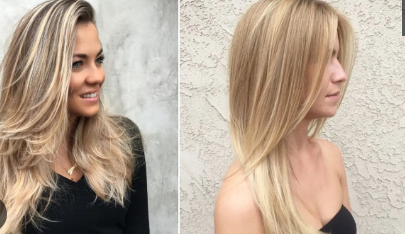
Which of curly and straight hair is more beautiful?
Social Media & Hair Empowerment
This societal change has been much aided by sites like Instagram and TikHub. Millions of people are inspired to embrace their texture by hair routines, styling tips, and glow-ups posted by celebrities.
Particularly for young ladies just realizing their natural curl pattern, hashtags like #CurlyHairJourney and # Natural Hair Movement link groups and inspire self-love.
Globally Curious about Curls
It also fascinates those without naturally curly hair. Curling—think of curling irons, perms, and texturizing sprays—is a whole business. Differences in Ethnic Texture Hair texture is rather much influenced by genetics: Of those with African heritage, over 100% have textured curls or coils. Mixed hair types abound among biracial people, at 78% of them.
Caucasians and Asians,
Of Caucasians and Asians, just 5–15% have naturally wavy or curly hair. In societies where straight hair is predominant, curly hair is therefore more remembered and striking.
Transformations and Challenges in Curls
Your hair texture will vary with aging, hormonal changes (such as pregnancy or puberty), or medical disorders. Rarely, though, do major texture changes from straight to curly occur without chemical or heat involvement.
Texturizing and Perming: Explained
Chemically changing the internal structure of the hair, permanent waves or perms produce long-lasting curls. Although misused, these treatments can be harmful, they provide a choice for individuals who want curls. Gentler, relaxing natural curls or waves without completely straightening them are called texturizers. Safe and reversible lower-commitment options include heatless curl sets, curl-enhancing treatments, or clip-in curly extensions.
Men’s Actually Views
What then are masculine perspectives on the curly against straight argument? Studies reveal conflicting outcomes from surveys: Twenty-two percent of guys like tightly curled curls. Twenty-one percent like loose, sparkling waves. Just forty percent of respondents said they most wanted straight hair.
Fascinatingly, hair was placed considerably lower than charisma, compassion, and intelligence when asked to score traits people search for in a romantic partner. Therefore, even if hair texture draws attention, it hardly affects long-term attraction.
Empowerment above approval
Many women are increasingly picking haircuts based more on how they feel than on how they will be judged, rather than on affirmation. It’s about confidence and self-expression, whether that means dying your curls pink, flat ironing, or embracing natural coils.
Boosting Curly Hair Confidence
Loving your curls can be challenging, particularly if you are still learning how to treat them. On sunny days, distinct spirals can be inspiring. On bad days, dryness or frizz can bring your attitude down. Community and education so become important.
Accepting the curve of learning
Learning curve for curly hair care is steep: knowledge of porosity, product layering, and styling techniques. For guidance, encouragement, and product evaluations, many go to YouTube or Reddit. Though the road is slow, the benefits—confidence and hair health—are well worth it.
Setting Up an Inspired Hair Space
Surround yourself with encouraging models of curly beauty. Experiment with your looks, bookmark curl techniques, and follow natural hair inspirations. Your feed should represent the type of beauty you wish to honor rather than fit.
Increasing Standards of Beauty
Fashion and media have long been dominated by Eurocentric beauty norms. But we are seeing increasing representation of diverse hair kinds and textures as society expands its definition of what is appealing.
From Zendaya’s refined coils to Alicia Keys’ freeform braids to Billie Eilish’s straight jet-black locks—beauty is now a larger canvas.
Final thought
Regarding the argument on curly against straight hair, no one-size-fits-all solution exists. Because of its volume and bounce, science slants more toward curly hair as more aesthetically pleasing. Still, personal style, culture, and care all help to define how hair is seen.
More significantly, confidence drives actual beauty. Style your hair to fit your lifestyle, feel real, and make you happy. Whether you don a tidy bob or show ringlets, the most effective beauty standard is one in which self-love takes front stage.
Conclusion
From Zendaya’s refined coils to Alicia Keys’ freeform braids to Billie Eilish’s straight jet-black locks—beauty is now a larger canvas. Learning curve for curly hair care is steep: knowledge of porosity, product layering, and styling techniques. For guidance, encouragement, and product evaluations, many go to YouTube or Reddit. Though the road is slow, the benefits—confidence and hair health—are well worth it. https://liferools.com/wp-admin/post-new.php
FQS
Often asked questions on curly hair appeal. Scientifically, which is more appealing—straight or curly hair?
Though personal tastes differ, research shows that curls are more attractive because of volume and femininity cues.
Which style—straight or curly—do guys prefer?
Though generally hair type comes low in dating criteria, surveys indicate most men enjoy at least some texture or wave.
With curly hair, which facial forms go best?
Though professional styling can make any shape work with any texture, round, oval, and heart-shaped features usually fit curls.
Does curly hair accentuate your features?
Healthy and defined curly hair gives many people appealing energy and softness.
Does curly hair accentuate your age or a younger appearance?
Particularly when abundant and well-kept, curls usually exude a young vitality.
From what ethnicity does one find most appealing hair?
Beauty is culture-influenced and personal. Most people find hair worn boldly in its healthiest form to be most beautiful.
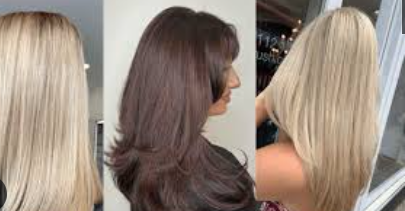
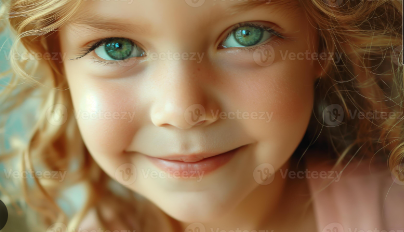
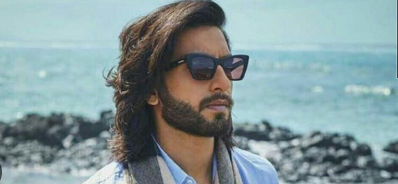
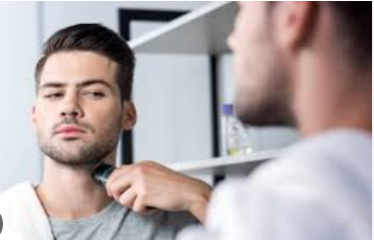
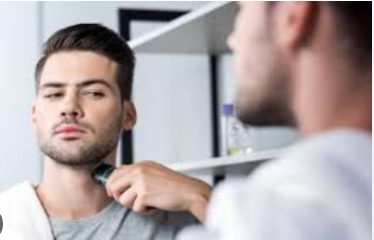




Leave a Reply